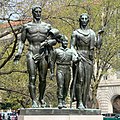The following outline is provided as an overview of and topical guide to sculpture:

Astoria is a neighborhood in the western portion of the New York City borough of Queens. Astoria is bounded by the East River and is adjacent to three other Queens neighborhoods: Long Island City to the southwest, Sunnyside to the southeast, and Woodside to the east. As of 2019, Astoria has an estimated population of 95,446.
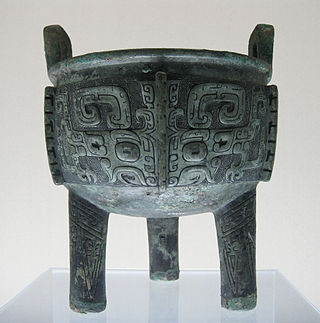
Bronze is the most popular metal for cast metal sculptures; a cast bronze sculpture is often called simply "a bronze". It can be used for statues, singly or in groups, reliefs, and small statuettes and figurines, as well as bronze elements to be fitted to other objects such as furniture. It is often gilded to give gilt-bronze or ormolu.

Lost-wax casting is the process by which a duplicate metal sculpture is cast from an original sculpture. Intricate works can be achieved by this method.

The Chimera of Arezzo is regarded as the best example of ancient Etruscan art. The British art historian David Ekserdjian described the sculpture as "one of the most arresting of all animal sculptures and the supreme masterpiece of Etruscan bronze-casting". Made entirely of bronze and measuring 78.5 cm high with a length of 129 cm, it was found alongside a small collection of other bronze statues in Arezzo, an ancient Etruscan and Roman city in Tuscany. The statue was originally part of a larger sculptural group representing a fight between a Chimera and the Greek hero Bellerophon. This sculpture is likely to have been created as a votive offering to the Etruscan god Tinia.

The Little Fourteen-Year-Old Dancer is a sculpture begun c. 1880 by Edgar Degas of a young student of the Paris Opera Ballet dance school, a Belgian named Marie van Goethem.

Maman (1999) is a bronze, stainless steel, and marble sculpture by the artist Louise Bourgeois. The sculpture, which depicts a spider, is among the world's largest, measuring over 30 ft high and over 33 ft wide (927 x 891 x 1024 cm). It includes a sac containing 32 marble eggs and its abdomen and thorax are made of ribbed bronze.

The Louis Riel sculpture is a monument to Louis Riel located on the grounds of the Manitoba Legislative Building in Winnipeg. Commissioned by the Manitoba Metis Federation (MMF) and sculpted by Miguel Joyal, the statue is located on the building's south grounds and faces the Assiniboine River.

José Mariano de Creeft was a Spanish-born American artist, sculptor, and teacher known for modern sculpture in stone, metal, and wood, particularly figural works of women. His 16-foot (4.9 m) bronze Alice in Wonderland sculpture climbing sculpture in Central Park is well known to both adults and children in New York City. He was an early adopter, and prominent exponent of the direct carving approach to sculpture. He also developed the technique of lead chasing, and was among the first to create modern sculpture from found objects. He taught at Black Mountain College, the Art Students League of New York, and the New School for Social Research. His works are in the Whitney Museum, the Metropolitan Museum of Art, the Museum of Modern Art, the Smithsonian American Art Museum, and many other public and private collections.
Roman Bronze Works, now operated as Roman Bronze Studios, is a bronze foundry in New York City. Established in 1897 by Riccardo Bertelli, it was the first American foundry to specialize in the lost-wax casting method, and was the country's pre-eminent art foundry during the American Renaissance.

Casting is a manufacturing process in which a liquid material is usually poured into a mold, which contains a hollow cavity of the desired shape, and then allowed to solidify. The solidified part is also known as a casting, which is ejected or broken out of the mold to complete the process. Casting materials are usually metals or various time setting materials that cure after mixing two or more components together; examples are epoxy, concrete, plaster and clay. Casting is most often used for making complex shapes that would be otherwise difficult or uneconomical to make by other methods. Heavy equipment like machine tool beds, ships' propellers, etc. can be cast easily in the required size, rather than fabricating by joining several small pieces. Casting is a 7,000-year-old process. The oldest surviving casting is a copper frog from 3200 BC.

Morris Singer is a British art foundry, recognised as the oldest fine art foundry in the world. Its predecessor, Singer was established in 1848 in Frome, Somerset, by John Webb Singer, as the Frome Art Metal Works.
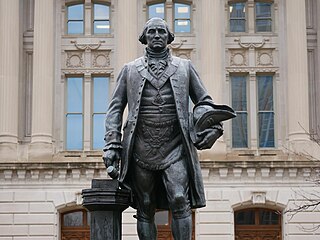
George Washington is a public artwork by American sculptor Donald De Lue, located on the grounds of the Indiana Statehouse, in Indianapolis, Indiana, United States. The bronze statue of George Washington that occupies the Indiana Statehouse south lawn is one of several copies of a 1959 original wax cast at the Modern Art Foundry in Long Island, New York.
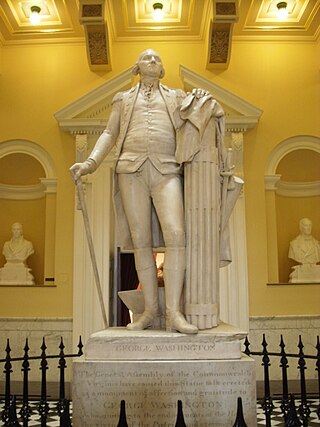
George Washington is a statue by the French sculptor Jean-Antoine Houdon from the late 18th century. Based on a life mask and other measurements of George Washington taken by Houdon, it is considered one of the most accurate depictions of the subject. The original sculpture is located in the rotunda of the Virginia State Capitol in Richmond, Virginia, and it has been copied extensively, with one copy standing in the United States Capitol Rotunda.

The Steinway Mansion is at 18-33 41st Street on a one-acre hilltop in the Astoria neighborhood of Queens in New York City. It was built in 1858, originally on 440 acres (1.8 km2) on the Long Island Sound, by Benjamin Pike Jr., a manufacturer of scientific instruments.

Andrew W. DeVries is an American artist and sculptor living and working in the Berkshires of western Massachusetts. His works, primarily in lost wax cast bronze produced at his own foundry, explore the human body portrayed through dance, though he has a substantial body of work centered in the purely symbolic form as well.

William Underhill was an American sculptor.
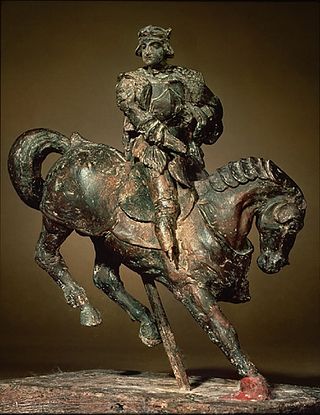
Horse and Rider is a beeswax sculpture depicting a rider on a horse. The history of the sculpture is unknown before the 20th century. The work has been attributed to Leonardo da Vinci by the Italian art historian Carlo Pedretti, though most historians have ignored or denied the attribution. A number of casts have been made, using a mold taken from the wax original.

Artistic Foundry Battaglia is one of the oldest artistic bronze foundries in the world. It specializes in producing artistic sculptures using the lost-wax casting technique.
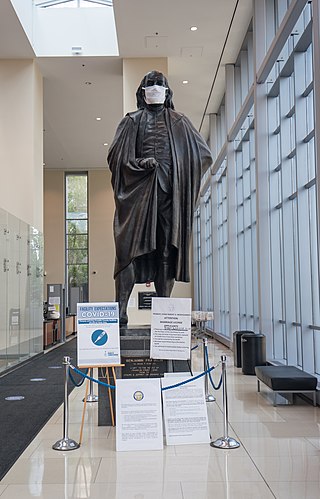
Benjamin Franklin, a 1974 bronze statue of Benjamin Franklin, stands inside the Franklin County Government Center in Columbus, Ohio. The statue was created by James P. Anderson and cast in Pietrasanta, Italy.



